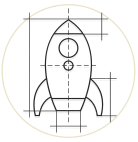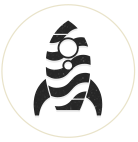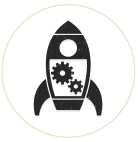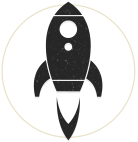The Tools of Successful Web Design
You often hear of all of these phrases but unless you're knee deep in the technology, you may not completely understand the difference between these and other related terms. This article will examine the different roles of each and how they contribute to a project, highlighting the path this author took over the years in the process.
Graphic Design
Before we can jump into the web aspect, we need to take a step back and look at pure design. Graphic design is about creating an emotional response in a viewer and involves skillful use and balance of characteristics such as colour combining, relational layout positioning, form of smooth lines, hard corner, rough edges and gradient - all used to set a tone or theme. Knowing how to work with these elements takes talent and experience. I've always felt that designers have the most creative freedom as they're not as bound by technology and can express themselves through a plethora of media, from print to digital to 3D. We live in such a high paced environment technologically speaking, and since our attention spans are fleeting, making an impression in a few seconds takes a skillful artist who knows not only the medium but the audience. Graphic designers work with page layouts, logos, anything that can present an image.
Web Design
When applied graphic design is presented on a website, this could be considered 'web design'. Originally, to do this you'd have to know basic HTML and CSS. Initially the delivery on this medium was bound by desktop and laptop screen sizes along with occasional PDAs such as the now defunct Palm Pilot, and additionally the amount of colors and font choices were relatively limited. With relatively slow connections to the internet, it was crucial to know the reason behind and methodology for highly optimized web graphics to make sure imagery is presented as quickly as possible without compromising design integrity such as distortion. Tools like Photoshop, Illustrator and later on, Fireworks and others became essential to know. Web designers then had to adapt to new devices such as tablets and touch-screen mobile devices where screen real-estate was at a minimum. Always, image optimization was key in addition to finding new and creative ways to capture the viewer's attention. Nowadays, the term 'web designer' is rather ubiquitous and you can get away with little knowledge of coding.
Web Development
If there is a middle-ground between being a web designer and a programmer, it's the 'web developer'. They are responsible for taking a graphic layout, often provided with Photoshop, Illustrator or other design applications and turning that into a website. This often involves a higher degree of interactivity requiring the use of client side languages such as JavaScript, and later on, jQuery and server-side languages like PHP which can talk to a database, often run with mySQL. Web developers can appreciate both the needs of design and the functionality of programming to bring much more life and dynamics to a website. Static html sites are quickly becoming a thing of the past, and web developers are helping lead the way to creating more practical, useful websites.
Programming
These are the technicians that keep the machinery running efficiently. Programmers have a strong sense of order and are always seeking out ways to make the complex, simple. Programming is a broad term and can involve various paradigms like procedural languages, which go from step to step, or object-oriented languages which use packets of code, called in various places. When it comes to web content, there are dozens of languages and frameworks to choose from including Python, Ruby on Rails, PHP, ASP, .NET, Java, Apache, Perl, and many others. Programmers keep the processing happening, the servers running, the transactions secure. They are responsible for the building blocks of the web.
There you have it. Those are the people and skills involved in the content we see on the web and beyond. The future will be ever changing in this realm and will continue to develop past the screen, and into 3D and holography. It's an exciting world ahead of us!




